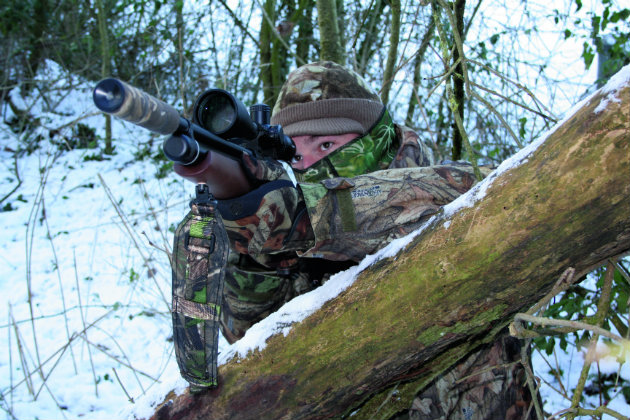How to keep your air gun working its best when the temperature is low and it's wet
Today’s performance fabrics such as Gore-Tex mean that we can stay outside in wet, freezing temperatures for longer than ever before. But what about caring for your air rifle in cold and wet weather? What do you need to know about maintaining it, so that it continues to perform well and doesn’t suffer any damage? (Read our tips for airgunning in the cold.)
Caring for your air rifle
A cold day could well be beautiful, with bright blue skies and just a sprinkling of snow or frost. After an outing you’ll be ready to pack your gun away and drive home.
However there are a few routines involved in caring for your air rifle which you need to carry out before you do that. You need to reduce any risk of corrosion, which will appear if a damp gun is put away. Dry off your gun and scope with a clean and soft microfibre cloth kept for just this purpose.
To avoid the build up of water condensation on the metal which will come from putting a cold gun in a warm place (like your car) try and let your air rifle come to room temperature before you put it in its bag. If this isn’t possible and it’s safe to do so, leave the bag unzipped so that the air can get to the gun. As soon as you get home take the gun out of the bag. Dry off the inside of the bag and leave it open to air and remove any existing moisture.
Products such as Napier Super V90 are good for air rifles that are kept in gun cabinets. The product comes in a sachet which you attach to the interior of the gun cabinet. It creates a protective vapour that protects the rifle without harming wooden stocks or scope lenses. A sachet of Napier Super V90 will last about a year. (Read our list of best airgun kit for more suggestions for caring for your air rifle.)
Dealing with wet days

Air canisters are useful for removing moisture from crevices
A canister of air is also useful for removing water from crevices such as scope mounts. Finish with a soft, dry microfibre cloth.
Muddy
Take care if you’ve been shooting somewhere muddy as there could be splashes containing grit on your rifle, which could scratch the metalwork. Dab the metalwork rather than rubbing and make sure the cloth is clean by using different sections of it. Never use a cloth that’s been sitting around in your car attracting dirt and debris.

Cordura-lined bags are less likely to absorb moisture
Looking after blued metalwork
The Napier VP90 Field Patch is a single-use cleaning cloth impregnated with gun oil. Blued metal is attractive but can be susceptible to corrosion so wiping down with gun oil is a good idea.
You could also use liquid car wax on a clean dry cloth – but use it sparingly!
How waterproof is your air rifle?
- Take off the moderator
- If your barrel is shrouded, take this off too, which might involve using a set of Allen keys. Rain can easily find its way inside. Remove it and dry it properly.
- Take off the gun stock. If you’ve never done it before then allow yourself a bit of time and don’t do it when you are cold and tired.
- Cans of compressed air (they’re often used for camera equipment) are good at forcing out any water that’s in tight crevices like scope mounts and cocking mechanisms. Just make sure the water doesn’t end up elsewhere in your gun.
Wooden air rifle stocks
You can check to see if the gun stock has absorbed water by running your hand over the surface – water will raise the fibres. If a gun stock is treated properly it will repel water. Synthetic and soft-touch stocks are impervious to water but it’s worth removing any washers or screws, checking they are clean and dry and then reassembling your combo. Use a small smudge of moly grease to protect them.
If a stock has a scratch (from a barbed wire fence for example) it could absorb water, so soak it up before the wood swells.
Oiled walnut stocks are good at repelling water if the oil finish is maintained. It needs to be topped up annually.
Make sure all the parts are perfectly dry before reassembling and never put any part of the gun near direct heat.
Follow these procedures for caring for your air rifle after a wet and cold outing and it will perform well the next time you take it out and continue to do so for a good while to come.




